How to Extract Data from Purchase Orders: Automate PO Processing with AI
Automate purchase order processing with AI. Learn how to extract data from PDF, Excel, or scanned POs and streamline workflows using Airparser — no manual data entry required.
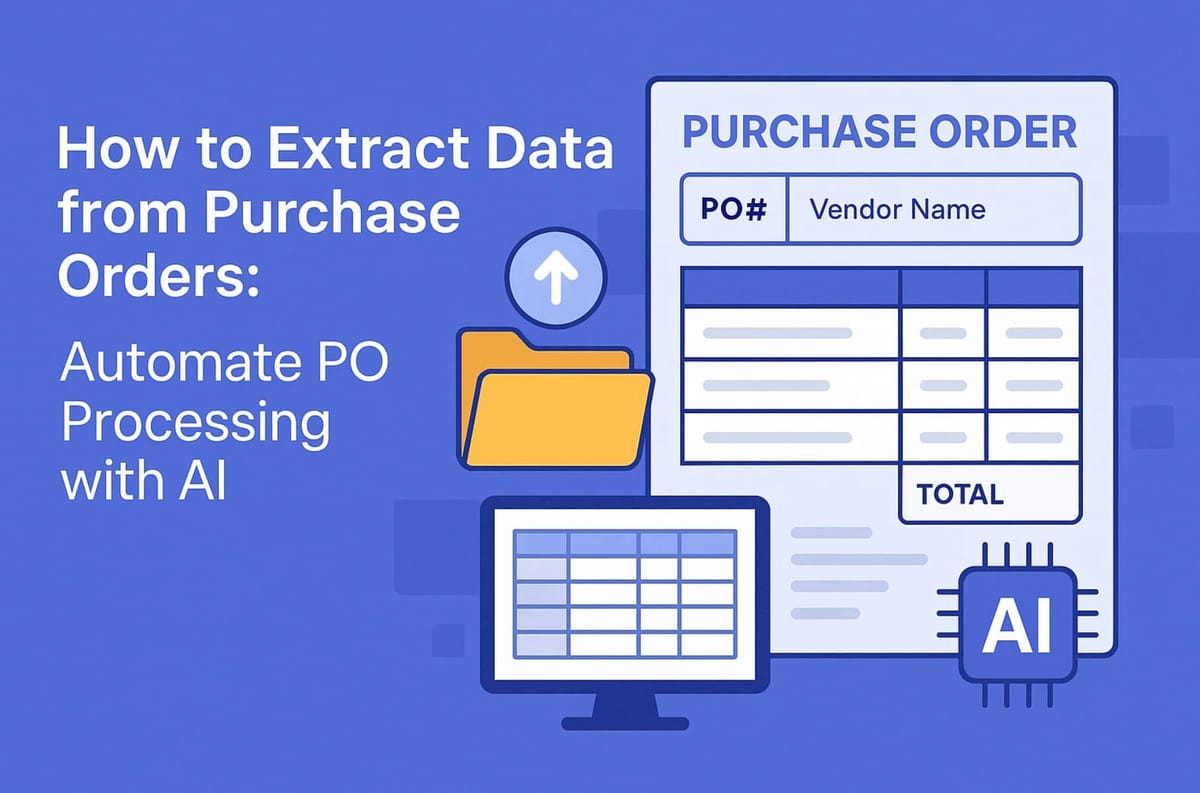
Purchase orders (POs) are essential documents for businesses of all sizes. They authorize purchases, track orders, and provide a formal record between buyers and suppliers. But for most teams, processing these documents is still a manual and time-consuming task.
Whether you're a finance team entering POs into your ERP, a procurement manager matching POs against invoices, or an operations lead reconciling inventory, manual PO data entry slows you down. The documents often come in different formats — PDFs, Excel, scanned images — and the layout varies by supplier.
In this guide, we’ll show you how to automate purchase order processing using AI-powered document parsing. You’ll learn how to extract key data fields from POs and send them straight into your spreadsheets, databases, or tools — no manual work required.
Why Purchase Orders Are Hard to Parse Manually
A typical purchase order contains a variety of structured and semi-structured data:
- Header fields: PO number, issue date, vendor name, billing and shipping address
- Line items: product names, SKUs, quantities, prices, totals, taxes
- Other info: payment terms, shipping methods, notes, and approval signatures
The challenge is that no two POs look the same. One supplier may send a neatly formatted PDF; another might attach a scanned paper copy or an Excel sheet with merged cells and custom formatting.
This inconsistency makes rule-based tools brittle and hard to maintain. Even traditional OCR systems struggle with multi-column layouts, long item descriptions, and poor-quality scans.
That’s why many businesses still rely on human data entry — slow, expensive, and prone to errors.
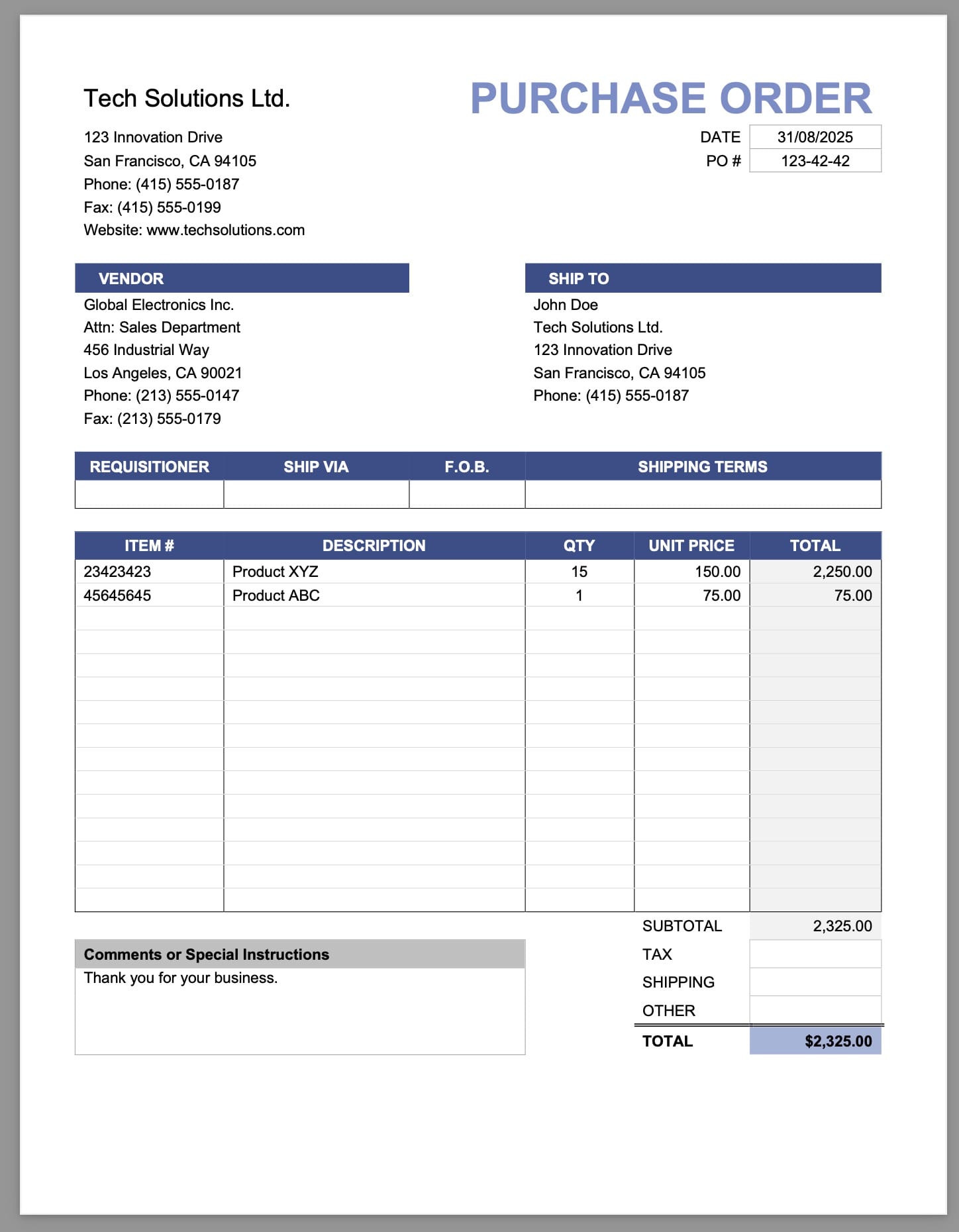
How AI Can Automate Purchase Order Extraction
Modern AI-based tools like Airparser make it easy to extract data from POs — no matter their format, layout, or language. Unlike rule-based parsers, Airparser uses large language models (LLMs) and vision-based document understanding to detect, extract, and structure key information automatically.
Here's how it works:
- You upload or forward purchase orders to Airparser.
- The platform analyzes the layout and content using AI.
- You define the fields you want (e.g. PO number, vendor, items).
- Airparser returns clean, structured data — ready to use.
Benefits of using Airparser:
- Works with PDFs, Word, Excel, scanned images, and more
- No template or layout mapping required
- Handles tables, multiline fields, and even handwritten notes (via OCR + Vision LLM)
- Supports automation via email, API, Zapier, or Make
🔗 Related: Automating Invoice Processing: AI vs. Traditional OCR
Step-by-Step: Automating PO Parsing with Airparser
Let’s walk through how to set up automated purchase order parsing with Airparser.
Step 1: Upload a Sample Purchase Order
Start by creating a new parser in your Airparser dashboard.
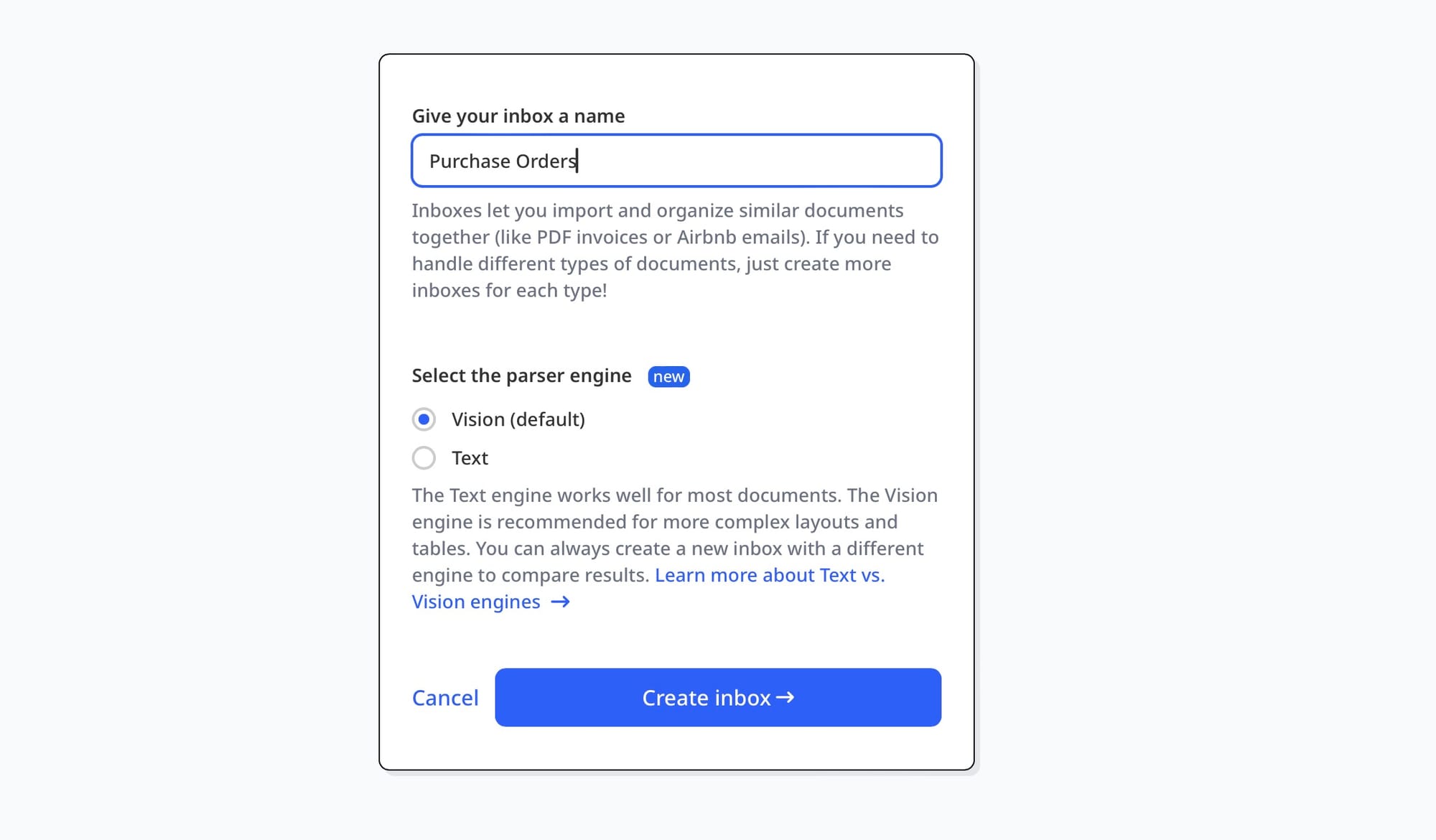
- Choose the Text engine for digital PDFs and Excel files
- Choose the Vision engine for scanned POs, image-based formats, or complex tables
- Upload a representative sample of your POs — ideally from multiple vendors
Airparser will analyze the document and prepare to extract the relevant fields.
Step 2: Define the Fields You Want to Extract
Using a simple interface, you can specify the fields to extract from your POs, such as:
PO NumberVendor NameIssue DateItem DescriptionQuantityUnit PriceTotal AmountShipping Address
You don’t need to write prompts or code — just name the fields, and Airparser will do the rest. You can review and adjust the results in real time.
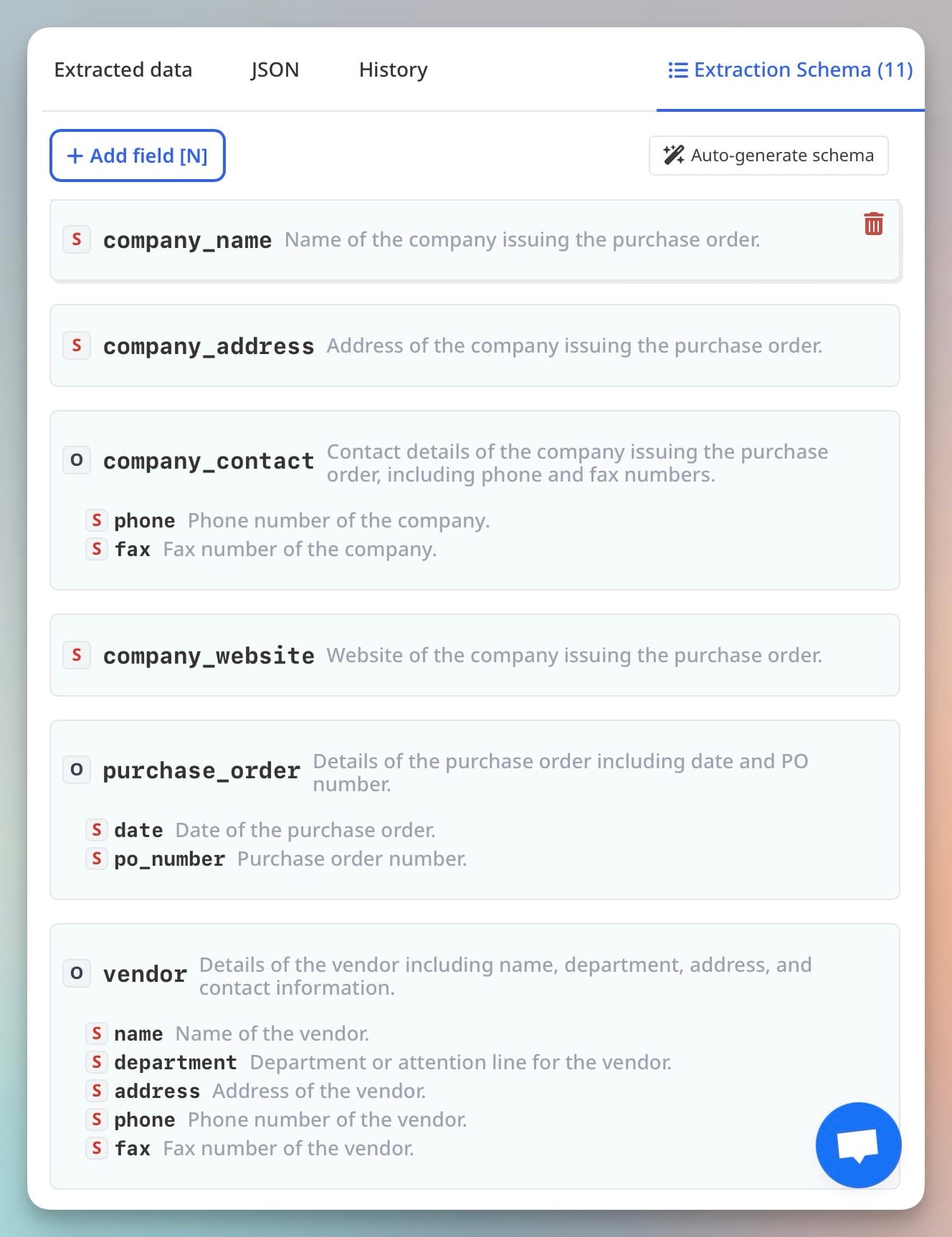
Step 3: Send POs Automatically to Airparser
To automate the flow of purchase orders into Airparser, you have several options:
- Email forwarding: Send POs via email to your unique Airparser inbox
- Zapier or Make: Trigger parsing when a new file is added to Gmail, Outlook, Dropbox, etc.
- API: Integrate directly with your PO submission or procurement system
Airparser will extract data from each new PO as it arrives — whether it’s a PDF, Excel, Word doc, or scanned image.
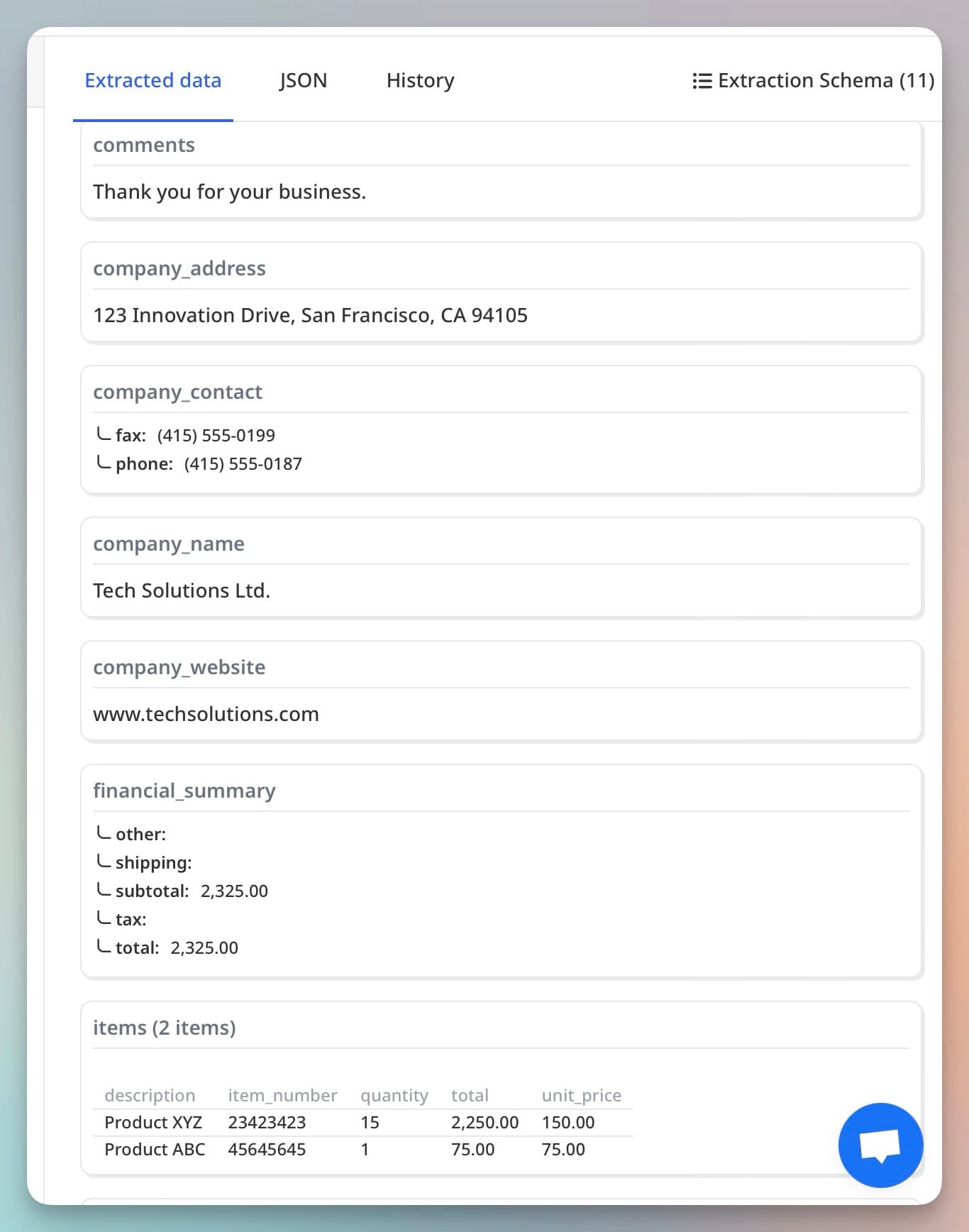
Step 4: Export to Your System of Record
Once parsed, your PO data can be exported in various formats:
- CSV or Excel
- Google Sheets (native integration)
- JSON via Webhook or API
- Connected to ERPs, inventory systems, CRMs, or accounting software
This allows you to power downstream workflows like inventory updates, invoice matching, or budget forecasting.
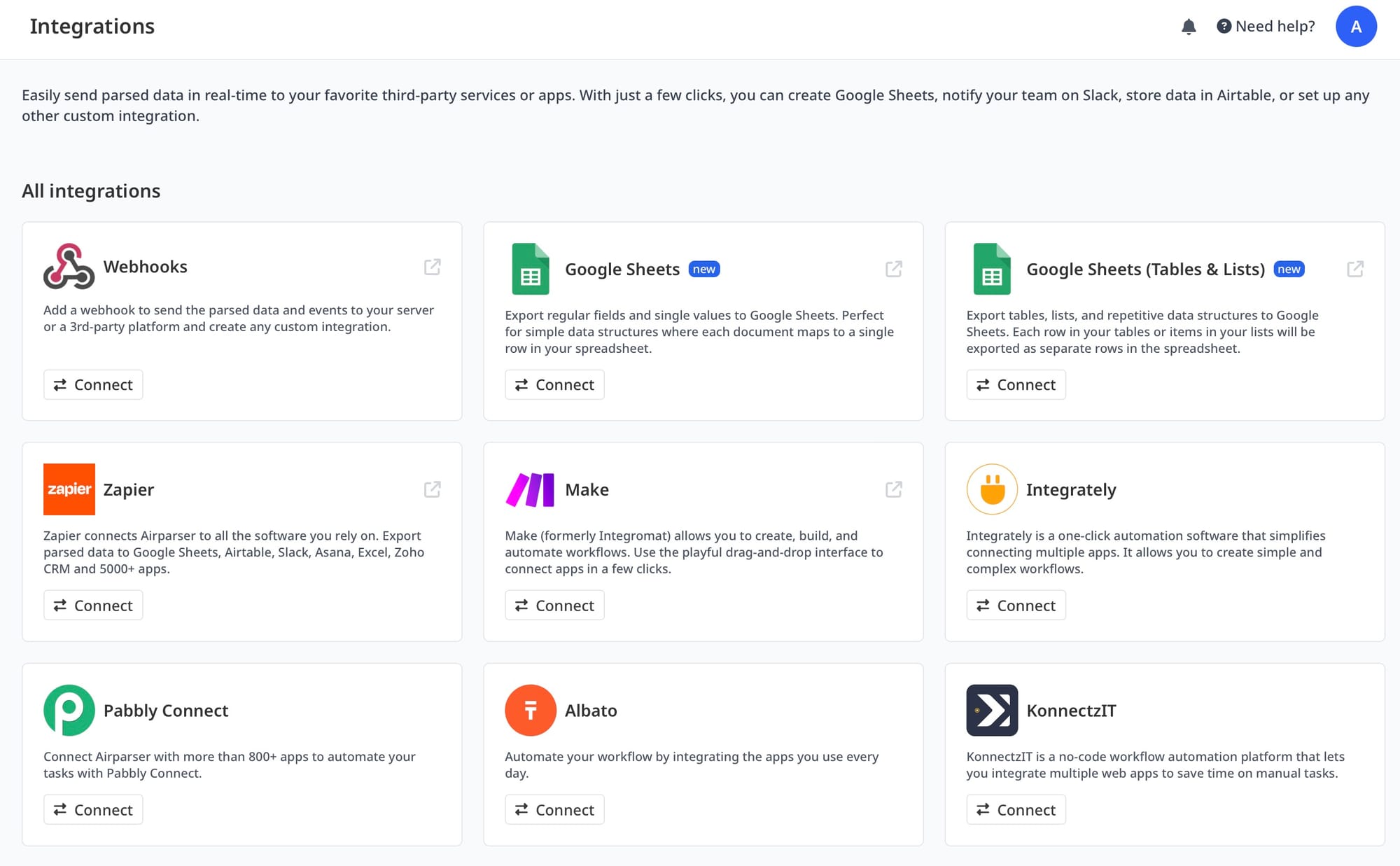
Examples: How Businesses Use PO Parsing in Practice
AI-powered PO parsing isn’t just about efficiency — it enables smarter workflows across industries. Here are a few real-world examples:
🏭 Manufacturing
- Parse incoming POs from parts suppliers
- Automatically update inventory and reorder points
- Sync data with ERP like NetSuite or SAP
🛒 Wholesale & Retail
- Process customer POs received via email or portals
- Automate sales order creation and invoicing
- Eliminate manual entry into order management systems
🚛 Logistics
- Extract shipping info and SKUs from POs
- Match POs to shipping manifests or delivery notes
- Improve 3-way matching and compliance
🛍️ E-commerce
- Extract order details from supplier POs
- Track product costs and delivery schedules
- Send alerts if pricing or quantities change
Bonus: Automate Your PO Workflow with Zapier or Make
Using Zapier or Make, you can fully automate your purchase order pipeline. For example:
- New email with PO attached → Parse with Airparser
- → Add structured data to Google Sheets
- → Create draft bill in Xero or QuickBooks
- → Notify the procurement team in Slack
You can also build custom logic:
- Flag discrepancies between PO and vendor invoice
- Auto-approve low-value POs
- Trigger reorder workflows
🔗 Learn more: Advanced Automations with Airparser + Zapier or Make
Security and Accuracy Matter
POs are legally binding financial documents, so accuracy and security are non-negotiable.
Airparser is built with enterprise-grade safeguards:
- Data is encrypted at rest and in transit
- Documents are never used to train models
- You can set automatic retention policies or delete documents manually
- GDPR-compliant and safe for finance, healthcare, and legal documents
Final Thoughts: Streamline PO Processing with AI
Manual PO processing is slow, error-prone, and unsustainable as your business scales. By switching to AI-powered PO extraction, you can:
- Save hours of manual work per week
- Improve data accuracy and audit readiness
- Enable real-time procurement, accounting, and inventory updates
- Eliminate the need for rigid templates or rule-based systems
Airparser makes it easy to get started — upload a few sample purchase orders, define your fields, and automate your flow.
👉 Try Airparser for free and see how quickly you can parse and automate purchase orders with AI.





